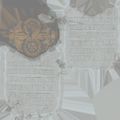Languages of Tyria
| The Guild Wars Wiki has an article on Language. |
There are various languages throughout the world of Tyria, with at least three commonly found languages during the time of Guild Wars 2.
Tyrian[edit]
The Tyrian language, often referred to as the "common tongue," is spoken in various different dialects by the majority of all sentient races throughout the world of Tyria. It allows people of different nations, cultures and races to effectively communicate with each other, even if their endemic written language systems were different from each other.
The history of the Tyrian language goes back to ancient history, at least to the very last cycle of the Elder Dragons' awakening over 11,000 years ago. In this cycle which served as a prelude to the dragonrise currently experienced in Tyria, five races were shepherded by the Elder Dragon Kralkatorrik's former dragon champion Glint. These elder races (dwarves, jotun, Forgotten, mursaat, and Seers) had their own languages, but as they fought and struggled to survive the predations of the Elder Dragons, they realized there would be a need for communication, not only amongst themselves in the short term but to convey information to the future generations of whatever they learned about the Elder Dragons.
It is unclear whether these ancient races adopted one of the races' languages as the common tongue, whether the common tongue already existed and pre-dates those races, or whether they devised a new "common" tongue that all the races learned and passed on to future generations and intelligent races they were to end up coming in contact with. Whichever of these theories is correct has been lost to history, and the only thing that scholars can definitely state is simply the knowledge that it was that first cooperation among the races who survived the last Elder Dragon cycle which gave birth to the widespread use of a common language that all Tyrians are raised to learn. However, it is safe to say that it is due to the cooperation of these ancient races that Tyrian is used as a common and shared language by basically every sentient race and creature to some extent.
After millennia since the Elder Dragons returned to slumber, it became clear that being able to understand one another was vital for survival, trade and even war.[1]
New Krytan[edit]
New Krytan is the standard writing system used in Central Tyria and Elona in modern times. It was formed to act as a way to aid in sharing knowledge and communication between the various races. It is a hybrid of the Ascalonian and Old Krytan writing styles and was created in 1105 AE by the Durmand Priory. Villem Caraga of the Durmand Priory wrote about the creation of this system in Cultural Diffusion in Contemporary Kryta.
Human[edit]
Ascalonian[edit]
Ascalonian is a fading language, used primarily by Separatists and those living in or around Ebonhawke.
Elonian[edit]
There is no Elonian language as much as there is an Elonian dialect with various words and phrases used alongside "common," the most famous utterance being the Elonian greeting of "ahai." Elonian words are generally only used in place names such as Gandara and Fahranur, making it difficult to determine their meanings through context. Some Elonian names hold Arabic and various African (e.g. Coptic, Yoruba) styles to them.
In 1075 AE, the written language of Elona was found throughout Istan, Kourna, and Vabbi, while ancient Elonian inscriptions from the time of Primeval Dynasty could be found in Istan near the ruins of Fahranur. However, as centuries have passed, the Elonian alphabet seems to no longer be in everyday use, whether because of Palawa Joko razing the Halls of Chokhin[2] during his reign in Elona or for other reasons. The New Krytan alphabet has replaced the Elonian script in notable cities such as the Free City of Amnoon in modern times.
- Notable words
- See also: Human#Names
- Ahai — Greeting.
- Dara — Fortress.[3]
- Droj — Sand.[4]
- Elon/Lon — (Suspected) Water.[5]
- Gan — Moon.[3]
- Kor — Fire/Burning.[4][6]
- Toma ― Sharp teeth.[7]
New Canthan[edit]
- See also: Designing the Canthan Written Language
Certain New Canthan logograms appear to be identical to symbols used in Old Canthan for the same words.
"Achievement"[8]
"Animal"[9], same as Old Canthan
"City"[10], same as Old Canthan
"Daughter"[11], same as Old Canthan
"Dragon"[12]
"Empress"[13]
"Fish"[14]
"Life"[15], same as Old Canthan
"Naga"[16]
"Siege Turtle"[17]
"Son"[11], same as Old Canthan
"Victory"[18]
"Warning"[19]
- Profession logograms
"Elementalist",[20] same as Old Canthan
"Engineer"[20]
"Guardian"[20]
"Mesmer",[20] same as Old Canthan
"Necromancer",[20] same as Old Canthan
"Ranger",[20] same as Old Canthan
"Revenant"[20]
"Thief"[20]
"Warrior,"[20] same as Old Canthan
All profession logograms together[20]
Orrian[edit]
Orrian syllabary is the writing system for Orrians prior to the Cataclysm and the kingdom's death. Orrian names hold a heavy Arabic style to them.
Old Krytan[edit]
Old Krytan is a dead language that still has a few uses seen in Tyria, primarily related to the druids.[21]
Asuran[edit]
The asuran script has changed in the past 250 years. Before the asura rose to the surface, it was a language that was half-mathematical and half-structured.[22]
The alphabet of the asuran script which can be seen on in-game screens and displays is based on a small subset of their written language converted into a cipher of the common tongue; specifically the letters being derived from how they write mathematics.[1]
- Notable words
- Bookah — The origin of "bookah" is that of a large, loud, bellowing, and dumb imaginary creature that the asura used to frighten their children. Since their surfacing, they use the term to refer to those they view as inferior beings, most often humans.[23][24] Bookah is one of the few known words of the old spoken asuran language known to outsiders.
- Poobah / pooh-bah — A term used by asura to refer to those in command above them, but in a less respectful, more playful, context.[25][26]
Charr[edit]
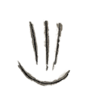
|
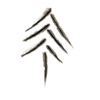
|
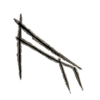
|
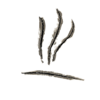
|
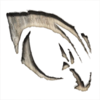
|
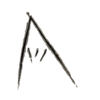
|
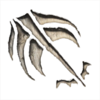
|
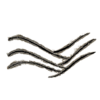
|

|

|

|

|
| — | West; Tree; Shiverpeaks. | East; Lean-to; Human settlement. | — | — | North; Mountain; Charr homelands. | — | South; Waves; Ocean. | — | — | — | — |
The charr have their own language, but have shown knowledge of common language long before the truce between Kryta and the High Legions.
Instead of a written language, before adopting New Krytan, the charr have used ideograms to communicate battle orders and similar information, though their use was not widespread during the rule of Flame Legion's shaman caste. The ideogram system is still used today by a select few, such as Ash Legion spies, to convey secret messages or trails.
- Notable words
- Hrangmer — "Jaws of Oblivion", the name of a volcano.
- Fahrar - Crèche, a form of school / nursery for young charr in the High Legions.
Hylek[edit]
Heart of Thorns mastery tracks allow learning the Itzel and Nuhoch dialects within the Heart of Maguuma. Heket seem to have a dialect very similar to the one Itzel use.[27]
- Notable words
- Amini — Hunter.[28]
- Cuicani — Singer.[28]
- Nahualli — Sorcerer.[28]
- Tequatl — The one in darkness.
- Tlamatini — Wise.[28]
- Tlatotetl — Speaker; literally "one who is as flame".[29]
Mursaat[edit]
The mursaat have their own language of which remnants can be found in the Mursaat Stronghold of Ember Bay, and in journals left behind in Janthir. It can be translated with the Heart of the Obscure.
Norn[edit]
The norn also have their own language, both spoken and written. However, this language is fading fast from norn culture. The spoken language can still be heard in names of places like Hoelbrak. The written language is no longer found; it once could be seen written on signposts of the Far Shiverpeaks although these were only a few runes, indicating the language to having already been at the stage of being edged out in favor of the common tongue.
Not much is known of the old language of the norn, except that it has more than one word for 'hunt.'[1]
- Notable words
- Hoelbrak — Lowland.[30]
Troll[edit]
The trolls speak a language which appears to have complex syntax with sometimes long sentences. Learned individuals who have studied the troll language, such as the Lowland Kodan of Lowland Shore, tend to act as interpreters when it comes to translating troll speech to people who wish to converse with trolls.
Gallery[edit]
Dwarven runes found in Thunderhead Keep.
Mursaat glyphs found on the Sealed Entrance.
Notes[edit]
- During development of the game, in the blog post that included Cultural Diffusion in Contemporary Kryta, Content Developer Matthew Medina stated that there would be five translatable languages with the release of Guild Wars 2: New Krytan, Ascalonian, Canthan, Asuran Script, and a fifth, previously unseen, language. That fifth language was to be Orrian syllabary, but was shelved later on during development.
Trivia[edit]
- ArenaNet internally refers to the Tyrian language as "Common" in homage to Jeff Grubb and the original D&D design team who solved this exact problem (Tyrian being a ubiquitous language) years before Guild Wars 2.[1]
See also[edit]
References[edit]
- ^ a b c d Post by Matthew Medina in "Lore Q&A", Old Guild Wars 2 Forums (Archived)
- ^ The Writings of the Last Spearmarshal
- ^ a b Gandara can be seen to translate to "moon fortress" as dara has been used in the case of both the Fortress of Jahai and Gandara to replace "fortress". This would leave gan to mean "moon".
- ^ a b Comment by Peter Fries, Reddit.com
- ^ The meaning of the word "lon", found in the names of the water djinn bosses in Guild Wars Sehlon, Beautiful Water and Leilon, Tranquil Water can be reasoned out by the titles they are given. Therefore, this would mean that the terms "seh" and "lei" would mean "beautiful" and "tranquil" respectively. Many landmarks around water in Guild Wars also featured the word "lon" or "elon" in their names.
- ^ The meaning of the word "kor", found in the names of the fire djinn bosses in Guild Wars Korrub, Flame of Dreams, Kormab, Burning Heart, Hajkor, Mystic Flame, Korr, Living Flame, can be reasoned out by the titles they are given. Therefore, this would mean that the terms "rub", "mab" and "haj", would mean "dreams", "heart", and "mystic" respectively.
- ^ Feeding Frenzy
- Chuno: That ignorant Sunspear meathead, Koss, thought it clever to tame this beast to defend the village. Such a foolish act would never impress the fair Melonni! But, despite that hideous nature of this monster, the villagers have taken a liking to it and given it the name Toma, which means "sharp teeth." Toma is hungry, so you'd better take him out to feed before he decides to snack on one of the villagers.
- ^ Official tweet, Twitter.com
- ^ Official tweet, Twitter.com
- ^ Official tweet, Twitter.com
- ^ a b Official tweet, Twitter.com
- ^ Official tweet, Twitter.com
- ^ Official tweet, Twitter.com
- ^ Official tweet, Twitter.com
- ^ Official tweet, Twitter.com
- ^ Official tweet, Twitter.com
- ^ Official tweet, Twitter.com
- ^ Official tweet, Twitter.com
- ^ Official tweet, Twitter.com
- ^ a b c d e f g h i j Official tweet, Twitter.com
- ^ Cultural Diffusion in Contemporary Kryta
- ^ Chapter 3, Ghosts of Ascalon by Matt Forbeck and Jeff Grubb:
- He stared for a moment at the words carved into the surface of the door. They were written in asuran script but used an archaic dialect popular before the subterranean asura had been forced to the surface more than 250 years earlier. It was a half-mathematical, half-structured sentence, and the syntax would make a human scribe take to the bottle. Many asura could no longer even read it. According to Dougal's research, Blimm's paranoia had driven him to write his notes in this script for that exact reason.
- ^ Krewe Influencers
- ^ Bookah (cinematic from Guild Wars: Eye of the North)
- ^ Stealing Light
- Elli: Excuse me? Most high poobity-poobah Jeyne? Permission to celebrate, ma'am?
- ^ A Shadow's Deeds:
- Taimi: That's because they're using ancient magic from a similar origin, or at least that's my current theory, Pooh-bah.
- Squad Leader Bennett: Did...your backpack just call you "pooh-bah," Commander?
- ^ Milin
- ^ a b c d Trading Trickery
- <Character name>: Amini.
- Pellam: Hylek for "hunter." They use spears and fight at close range. Best to put them nearby. [...]
- <Character name>: Cuicani.
- Pellam: Ah, the "singers." They breathe fire. Extraordinary! I'd put them up close... but not too close! [...]
- <Character name>: Nahualli.
- Pellam: That means "sorcerer." They use blow darts as well as spells. Put them at a greater distance. [...]
- <Character name>: Tlamatini.
- Pellam: Let's see, that meant "wise," I think. They use a net. Put them at the midrange.
- ^ Wild Growth
- <Character name>: What does the title "Speaker" mean?
- Speaker Mahuti: "Tlatotetl," in the ancient tongue. "Speaker," in yours. "One who is as flame." I draw my tribe together, and act as light so that they may see our direction.
- ^ Thyrie Bylund
!["Achievement"[8]](/images/thumb/5/5e/Canthan_logogram_achievement.jpg/70px-Canthan_logogram_achievement.jpg)
!["Animal"[9], same as Old Canthan](/images/thumb/b/b9/Canthan_logogram_animal.jpg/70px-Canthan_logogram_animal.jpg)
!["City"[10], same as Old Canthan](/images/thumb/b/b9/Canthan_logogram_city.jpg/70px-Canthan_logogram_city.jpg)
!["Daughter"[11], same as Old Canthan](/images/thumb/c/c8/Canthan_logogram_daughter.jpg/70px-Canthan_logogram_daughter.jpg)
!["Dragon"[12]](/images/thumb/9/91/Canthan_logogram_dragon.jpg/70px-Canthan_logogram_dragon.jpg)
!["Empress"[13]](/images/thumb/4/4c/Canthan_logogram_Empress.jpg/70px-Canthan_logogram_Empress.jpg)
!["Fish"[14]](/images/thumb/f/f9/Canthan_logogram_fish.jpg/70px-Canthan_logogram_fish.jpg)
!["Life"[15], same as Old Canthan](/images/thumb/c/c4/Canthan_logogram_life.jpg/70px-Canthan_logogram_life.jpg)
!["Naga"[16]](/images/thumb/a/aa/Canthan_logogram_naga.jpg/70px-Canthan_logogram_naga.jpg)
!["Siege Turtle"[17]](/images/thumb/4/48/Canthan_logogram_siege_turtle.jpg/70px-Canthan_logogram_siege_turtle.jpg)
!["Son"[11], same as Old Canthan](/images/thumb/8/8c/Canthan_logogram_son.jpg/70px-Canthan_logogram_son.jpg)
!["Victory"[18]](/images/thumb/8/87/Canthan_logogram_victory.jpg/70px-Canthan_logogram_victory.jpg)
!["Warning"[19]](/images/thumb/7/77/Canthan_logogram_warning.jpg/70px-Canthan_logogram_warning.jpg)
!["Elementalist",[20] same as Old Canthan](/images/thumb/5/53/Canthan_logogram_elementalist.jpg/67px-Canthan_logogram_elementalist.jpg)
!["Engineer"[20]](/images/thumb/8/88/Canthan_logogram_engineer.jpg/53px-Canthan_logogram_engineer.jpg)
!["Guardian"[20]](/images/thumb/0/07/Canthan_logogram_guardian.jpg/54px-Canthan_logogram_guardian.jpg)
!["Necromancer",[20] same as Old Canthan](/images/thumb/b/b3/Canthan_logogram_necromancer.jpg/62px-Canthan_logogram_necromancer.jpg)
!["Ranger",[20] same as Old Canthan](/images/thumb/9/90/Canthan_logogram_ranger.jpg/56px-Canthan_logogram_ranger.jpg)
!["Revenant"[20]](/images/thumb/0/0d/Canthan_logogram_revenant.jpg/55px-Canthan_logogram_revenant.jpg)
![All profession logograms together[20]](/images/thumb/7/74/Canthan_profession_logograms.jpg/120px-Canthan_profession_logograms.jpg)
